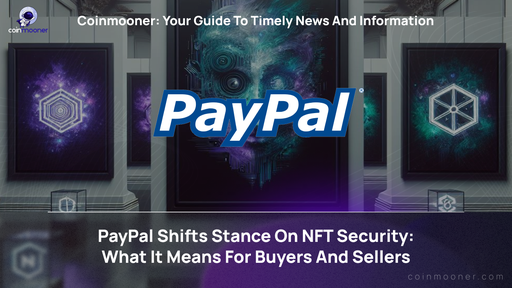What Is CeFi Crypto In 2022?


The rise of innovative blockchain technology in finance has forever changed the landscape of classic financial services and products. As the concept of cryptocurrency has entered the everyday life of investors, new systems of interaction between users and financial products have emerged, namely decentralized finance (DeFi) and centralized finance (CeFi).
What Is CeFi Crypto?
In a CeFi system, all cryptocurrency orders are processed through a central exchange. The funds are under the control of the main office. This means that investors do not have a private key that would give them access to their wallets. Centralized finance was a standard concept for trading cryptocurrencies before the emergence of DeFi, and it keeps control over the stronghold of the cryptocurrency industry.
In addition, such systems operate similarly to established financial institutions, requiring a mandatory KYC procedure before providing their services to customers and setting up personal accounts.
A trader or an investor doesn’t own cryptocurrencies when buying/selling them through a centralized exchange. Moreover, the traders are subject to the rules of the centralized system, such as identity verification and KYC.
Main Features
In the CeFi structure, customers can transfer funds to exchange to manage them in an internal account. It’s possible to do this through well-known and trustworthy virtual platforms such as Coinbase, Kraken, or Binance. While the funds are under the custody of the exchange, they are not held by users personally. They are vulnerable to various threats if the security measures implemented by the exchange fail.
Although centralized exchanges have been the target of several security attacks, their clients do not mind sharing their personal information or depositing funds with these companies, as they consider centralized exchanges reliable.
In addition, large exchanges have customer service departments to offer assistance to clients and ensure the sustenance of trust. The high level of customer support provides the client with comfort, reinforcing the feeling that their money is in good hands.
Centralized Finance Exchanges
Exchanges that operate based on centralized finance offer cryptocurrency trading and other top requested features, such as lending, borrowing, and over-the-counter trading. In this way, CeFi provides clients with the flexibility to address issues that may require special efforts and guidance.
A negative aspect of centralized exchanges is that such services manage user funds and data in centralized systems. And this means that the funds and information of users are not completely protected, and there are potential vulnerabilities to internal and external threats in this system.
The Flexibility of Fiat Conversion
Centralized platforms provides more flexibility and convenience when converting CeFi crypto coins to fiat money and vice versa. Exchanges between cryptocurrencies and fiat money usually require a centralized body. However, DeFi services cannot offer such a flexible exchange system to their users. Thus, customers involved in the Centralized Finance ecosystem can exchange crypto more conveniently and enjoy a better customer experience.
Cross-chain Services
CeFi also supports cross-chain services for cryptocurrency trading. Users can convert LTC to XRP or BTC to LTC without relying on the blockchain technology behind various cryptocurrencies. At the same time, DeFi cannot provide such cross-chain services, which reduces the efficiency of DeFi solutions.
Where to Use Centralized Finance
The CeFi system allows you to collect income through crypto accounts comparable to regular bank savings accounts but can provide significantly higher returns.
Unlike traditional savings, cryptocurrency deposits are not yet covered by insurance, so it is important to consider the perils of investing in digital money. Many experts advise diversifying risks by keeping some CeFi crypto on one of the deposit insurance sites.
Some of the best CeFi applications include
• Fairlay, a platform offering Bitcoin fluctuation predictions and exchange services based on the concept of CeFi;
• Coinbase, one of the most famous cryptocurrency exchanges, which facilitates trading and offers margin trading, borrowing, lending, futures, proprietary stablecoin, payments, and other financial instruments;
• BlockFi, a platform for lending and borrowing bitcoins and fiat currency;
• Celsius, a Bitcoin-based platform for borrowing, paying, and lending CeFi crypto coins;
• Ledn, virtual service for borrowing and lending bitcoins in DAI;
• Diem (formerly Libra), a worldwide financial infrastructure powered by cryptocurrencies.
How to Make Money with CeFi
Investors can loan money or earn interest to their cryptocurrency assets by lending them through a centralized entity. When users borrow funds, they might use their crypto holdings as collateral. A CeFi platform acts as a custodian of digital assets and offers a passive approach to earning in the way that an investor doesn't have to make decisions daily.
All CeFi products require users to "bet or stake” their digital assets to earn interest. Staking is the equivalent of making a deposit, and it comes in two forms: Soft Staking and Hard Staking.
Risks of Using
Any financial transactions and investments, online or offline, involve certain risks, and CeFi is no exception. Let's take a look at the most obvious drawbacks of centralized finance.
Transaction Fees
Higher transaction fees due to third-party involvement are among the main risks of centralized financial systems. In addition, centralized platforms always over-secure their loans. They usually require a collateral ratio of 200%+ to secure a loan. For example, if a client wants to borrow $5,000, they must deposit $10,000.
Hackers
The second risk is hacking or cyber-attacks. With centralized lending, an investor transfers their cryptocurrency assets to a platform that undertakes to guard them. It may result in hacking, as intruders can attack the custodian who holds this platform's funds.
CeFi vs. DeFi

Undoubtedly, centralized systems are more time-tested and have several undeniable advantages. Here are just a few of them:
Classic centralized platforms have disadvantages:
Generally speaking, both approaches have similar features. However, there are some significant differences.

Conclusion
Although CeFi and DeFi have a lot in common, successfully implement financial services, and offer similar concepts, the systems have completely different approaches to the fundamental issues of identifying, storing, and owning funds. Today, both DeFi and CeFi have a sufficient number of fans who use the services of DEX and CEX platforms.
During the global financial crisis, the importance of finding a safe haven loosely correlated with traditional markets increases.
The same goes for blockchain solutions covering all types of financial services, which neither governments nor other organizations should manipulate.
Frequently Asked Questions
What Is CeFi?
CeFi or centralized finance is an industry where end users can take advantage of the cryptocurrency world while remaining dependent on a third party. Essentially, the user trusts a third party, such as an exchange, to store and manage their crypto funds.
Where Can I Use Centralized Finance?
With CeFi, users can get a loan through collateralized cryptocurrency and lend cryptocurrency through intermediaries to earn interest.
Do I have Risks in Using CeFi?
Yes, certain risks are using CeFi. The fees might be too high. Also, there is a risk of funds misuse and hacker attacks










